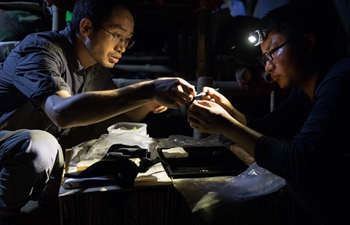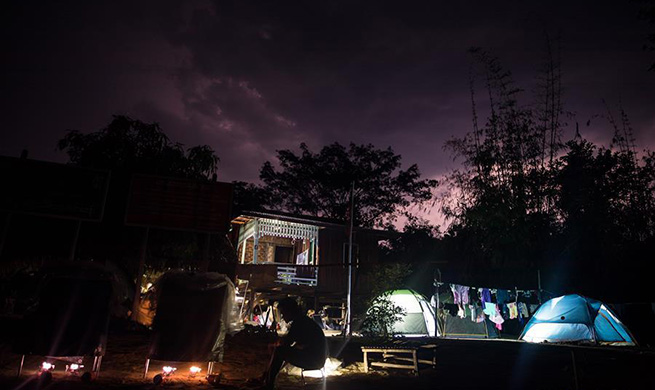WASHINGTON, June 3 (Xinhua) -- The U.S. space agency NASA announced on Monday that it had made headway in manufacturing the core stage that will power its next-generation heavy-lift rocket on upcoming missions to the Moon.
NASA and its lead contractor Boeing have assembled four-fifths of the complex, massive core stage used to launch the Space Launch System (SLS) and the Orion spacecraft.
The SLS and Orion spacecraft will be used to send the first woman and the next man to the Moon by 2024, a time-pressing task previously dragged down by multiple delays of SLS building.
The core stage in its current configuration is about 58 meters or the size of 12 cars parked end-to-end, making it the largest rocket stage NASA ever built since the Saturn V stages sending humans to the Moon nearly 50 years ago.
The final core stage will tower at about 65 meters and includes two propellant tanks and four RS-25 engines, according to NASA.
The engineers worked to join the liquid hydrogen fuel tank to the upper part of the core stage with 360 bolts. The upper part is made up of three previously connected large structures: the forward skirt that houses the rocket's flight computers, the liquid oxygen propellant tank, and the intertank that attaches to the rocket's powerful boosters.
The core stage will combine with the twin five-segment solid rocket boosters to bring the SLS and Orion into space. The solid rocket boosters and four RS-25 engines produce a combined thrust of about four million kilograms during launch and flight, according to NASA.
"NASA is constantly looking for ways to get work done more efficiently so that we can get astronauts landing on the Moon by 2024," said Ben Birkenstock, the SLS stages vehicle assembly lead at NASA, in a statement.

















